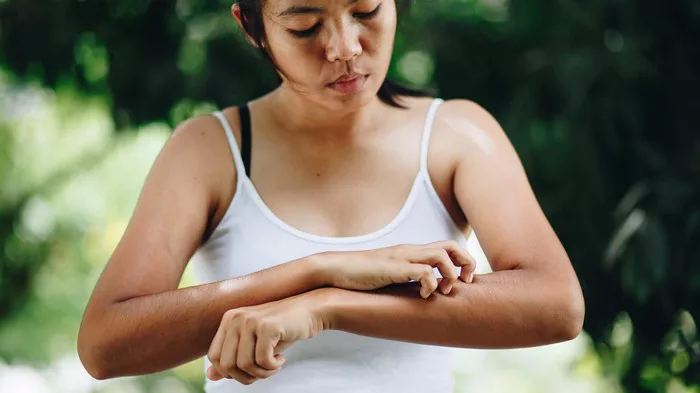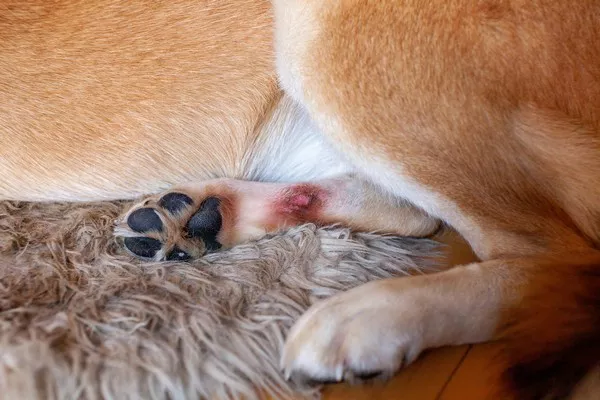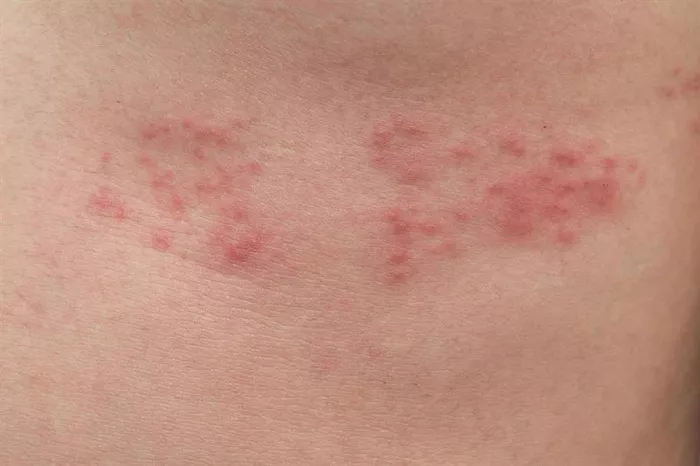Ringworm is a common fungal infection that affects the skin, hair, and nails. Despite its name, ringworm is not caused by a worm, but rather by fungi from a group called dermatophytes. These fungi thrive in warm, moist environments and can infect humans, animals, and even the soil. The condition is known for causing a circular, red, itchy rash that looks like a ring. Understanding how ringworms form can help you prevent and treat the infection. This article will explain the process of ringworm formation, its causes, and how to manage it.
What Causes Ringworm?
Ringworm is caused by a type of fungus called dermatophytes. These fungi feed on keratin, a protein found in the skin, hair, and nails. When dermatophytes come into contact with your skin, they can infect the outer layer and begin to spread. The infection is often spread through direct contact with an infected person, animal, or contaminated object. Dermatophytes thrive in environments that are warm, moist, and often dark, such as sweaty gym clothes, wet towels, and even public showers.
The main types of dermatophytes that cause ringworm are Trichophyton, Microsporum, and Epidermophyton. These fungi can live in many different places, including on the skin of humans and animals, in the soil, and on surfaces like floors or combs. Once the fungi land on your skin, they start to multiply, leading to an infection.
How Do Dermatophytes Spread?
Ringworm spreads in several ways. It can be passed from one person to another through direct skin-to-skin contact. This means that if you touch someone who is infected, the fungus can transfer to your skin. In some cases, the fungus may also spread through contact with contaminated objects, such as towels, clothing, combs, or shared sports equipment.
Another way ringworm spreads is through contact with infected animals. Pets, particularly cats and dogs, can carry ringworm and pass it on to humans. If an animal is infected, the fungi can be transferred to your skin when you touch them. In some cases, the fungi can also be present in the soil, and you may pick them up while gardening or walking barefoot in contaminated areas.
The fungi can also thrive in moist, damp environments, such as locker rooms, swimming pools, and communal showers. Walking barefoot in these areas increases your risk of getting ringworm, especially if you already have small cuts or abrasions on your skin.
How Does Ringworm Affect the Skin?
When dermatophytes land on your skin, they begin to infect the outermost layer, which is called the epidermis. The fungi feed on keratin, a tough protein found in the skin, hair, and nails. This causes the skin to become inflamed, itchy, and red. Over time, the infection can spread in a circular pattern, creating the characteristic ring-shaped rash that gives ringworm its name.
The infection starts as a small red patch that may be slightly raised or scaly. As the fungi continue to grow, the rash may spread outward, forming a ring with clearer skin in the middle. The rash can sometimes become itchy or even painful. In some cases, the skin in the affected area may become cracked or blistered.
Ringworm can appear in different parts of the body, and each type of infection has its own name. For example:
Tinea corporis is the most common form, affecting the body and causing the classic ring-shaped rash.
Tinea pedis, or athlete’s foot, affects the feet and is common among people who walk barefoot in public areas.
Tinea capitis affects the scalp and is more common in children.
Tinea cruris, or jock itch, affects the groin area, particularly in men.
Tinea unguium, or onychomycosis, affects the nails, making them thick and discolored.
In severe cases, the infection can spread to the deeper layers of the skin, causing more significant symptoms like pus-filled blisters, open sores, and secondary bacterial infections.
What Are the Symptoms of Ringworm?
Ringworm symptoms vary depending on the location of the infection and its severity. Common signs include:
Itchy rash: One of the most noticeable symptoms of ringworm is itching. The skin may become red and irritated, and you may feel a constant urge to scratch the affected area.
Circular, red patches: The infection typically appears as red, circular patches with raised edges. The center of the patch may be clear or slightly scaly, giving it the appearance of a ring.
Dry or scaly skin: As the fungi feed on the keratin in your skin, the affected area may become dry, flaky, or scaly.
Blisters or pustules: In more severe cases, ringworm can cause blisters or pus-filled bumps to form on the skin.
Hair loss: When ringworm affects the scalp (tinea capitis), it can lead to hair loss in the affected area. The hair may break off at the scalp, leaving bald patches.
Thickened nails: In cases of tinea unguium, the nails become thick, brittle, and discolored.
If you notice any of these symptoms, it’s important to see a healthcare provider for diagnosis and treatment.
How Are Ringworms Diagnosed?
Diagnosing ringworm is usually simple, as the characteristic ring-shaped rash is often easy to recognize. Your doctor will likely examine the affected area and ask about your symptoms. In some cases, they may take a scraping of the affected skin to examine it under a microscope. This can confirm whether dermatophytes are present.
If your doctor suspects a more severe infection or if the rash is difficult to identify, they may recommend a fungal culture, where a sample of skin is sent to a lab to grow the fungus. This test can help identify the specific type of fungus causing the infection.
Treatment for Ringworm
Ringworm is treatable with antifungal medications. The type of treatment you need depends on the severity of the infection and where it is located.
Topical treatments: For mild cases of ringworm, your doctor may recommend over-the-counter antifungal creams, lotions, or powders. These treatments are applied directly to the affected area and are usually effective within a few weeks. Common active ingredients include clotrimazole, miconazole, and terbinafine.
Oral medications: For more severe or widespread cases of ringworm, your doctor may prescribe oral antifungal medications, such as terbinafine, itraconazole, or fluconazole. These medications work from the inside out to eliminate the infection.
Antifungal shampoos: If the infection affects your scalp (tinea capitis), your doctor may recommend using antifungal shampoos in addition to oral medication.
It’s important to complete the full course of treatment, even if the rash appears to clear up early. Stopping treatment too soon can lead to a relapse or make the infection harder to treat.
How Can Ringworm Be Prevented?
Preventing ringworm involves taking steps to avoid exposure to the fungi that cause the infection. Here are some tips to reduce your risk:
Practice good hygiene: Wash your hands regularly and keep your skin clean and dry.
Avoid sharing personal items: Do not share towels, clothing, combs, or sports equipment with others.
Wear protective footwear: If you use public showers or locker rooms, always wear sandals or flip-flops to protect your feet from contact with contaminated surfaces.
Keep your skin dry: Fungi thrive in moist environments, so make sure to dry your skin thoroughly after sweating or showering.
Treat pets: If you have pets, make sure they are checked for ringworm, especially if they show symptoms like hair loss or itching.
Avoid contact with infected people or animals: If you know someone or an animal is infected with ringworm, avoid touching them until they are treated.
Conclusion
Ringworm is a fungal infection caused by dermatophytes that affects the skin, hair, and nails. These fungi thrive in warm, moist environments and can spread through direct contact with infected people, animals, or contaminated objects. The infection causes itchy, red, circular rashes and can be treated with antifungal medications. While ringworm is generally not a serious condition, it is important to seek treatment early to prevent it from spreading and causing more severe symptoms. Practicing good hygiene and taking preventive measures can help reduce your risk of getting ringworm.
Related topics:

























